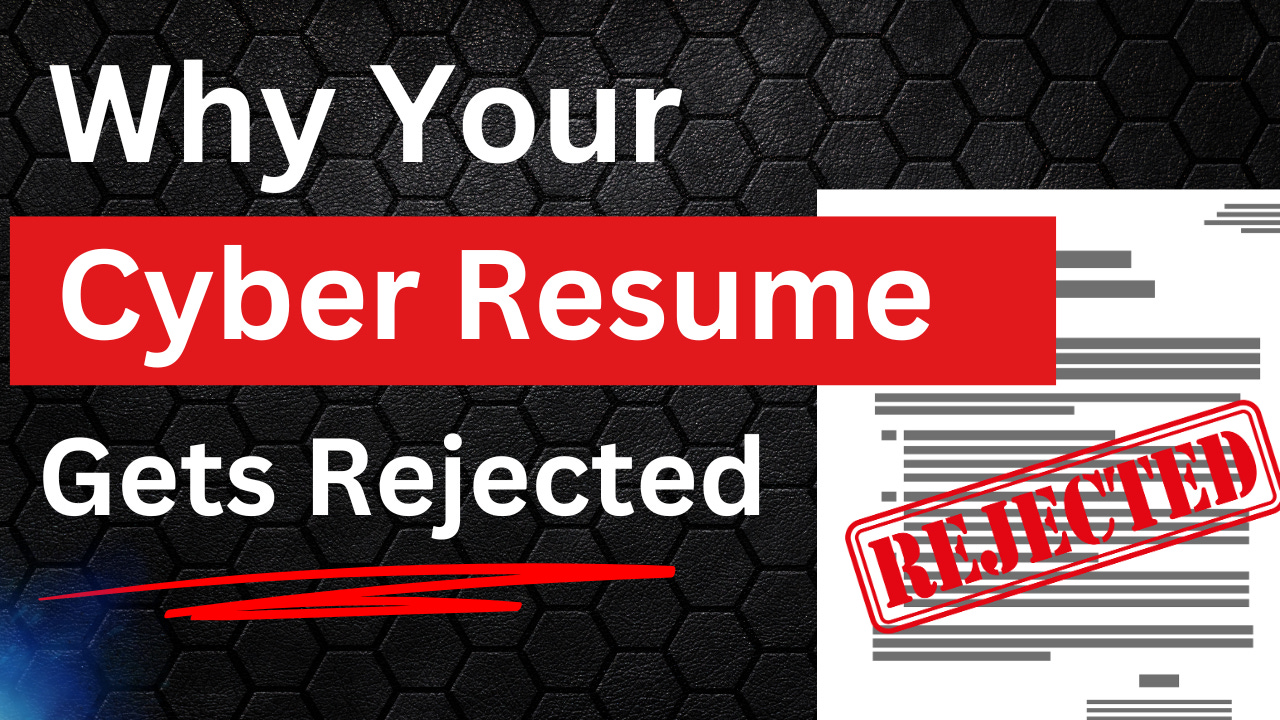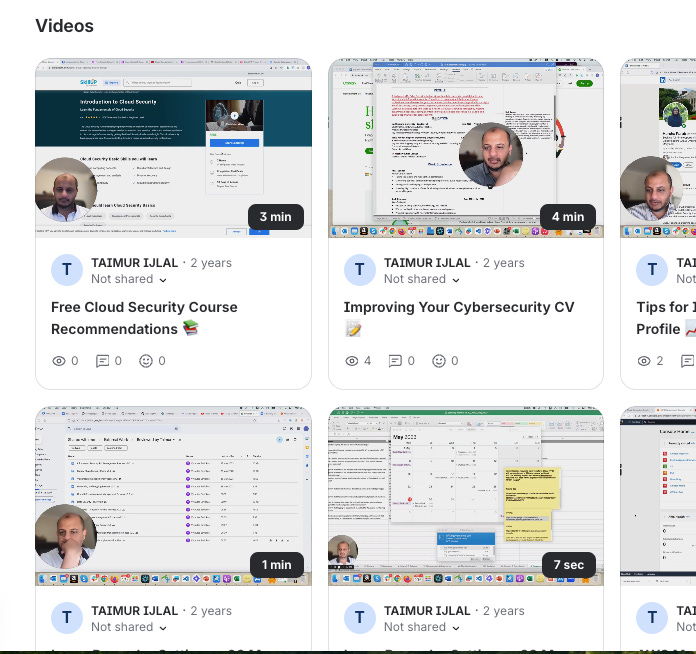The Harsh Truth: Why Most Cybersecurity Resumes Get Rejected
Are you making these mistakes on your cybersecurity resume?
After more than 20 years in cybersecurity and reviewing thousands of resumes, I can tell you one thing with absolute certainty: most resumes never make it past the first scan.
It’s not because the candidates lack skills.
It’s because they fail to present themselves in a way that makes recruiters or hiring managers stop and take notice.
Let’s start with a quick recap of the basics, then dive into the new mistakes I see in 2025 .. and the strategies that will set you apart in today’s ultra-competitive cybersecurity job market.
The Basics (Quick Recap)
I have talked about this before, but here is a quick recap os the basic mistakes I see
LinkedIn matters. Your banner, headline, and featured section are prime real estate. Use them wisely.
Resumes must show impact. Results > responsibilities. “Reduced vulnerabilities by 40%” beats “Managed protocols.”
Keep it clean. Recruiters spend only seconds scanning, so design and readability are crucial.
Certifications help .. but don’t overload. Quality beats a laundry list of acronyms.
These are still valid and will get you into the consideration pile. You can watch my video on this here:
Let’s move to some more tips to help you stand out.
1. The One-Page Rule
Early- and mid-career professionals don’t need three-page resumes. Recruiters with 200 applications won’t read beyond the first page.
Rule of thumb:
Entry-level to mid-career → 1 page.
Senior roles → 2 to 3 pages max.
Concise writing shows clarity of thought. If you can’t communicate your value on one page, you’ll struggle to do so in the job.
2. Keyword Optimization Without Keyword Stuffing
Yes, ATS (Applicant Tracking Systems) matters to avoid screening hell. But I’ve seen resumes where every line screams “cybersecurity, security, security analyst.”
That makes you look desperate and unreadable. Instead:
Study the job description.
Use relevant keywords once or twice, woven into achievements
Keep it natural.
Example:
Bad: “Cybersecurity professional skilled in cybersecurity operations, cybersecurity tools, cybersecurity frameworks.”
Good: “Implemented NIST-based cybersecurity framework, improving audit scores by 30%.”
3. Tailor Every Resume
One of the harshest truths: if you’re blasting the same resume to 50 jobs, you’re wasting your time.
I know it is a hassle sometimes, but recruiters can instantly spot generic resumes. They want to see alignment with their role.
Applying for a cloud role? Highlight AWS projects.
Applying for a GRC role? Lead with compliance and audit experience.
Tailoring takes 10 minutes per application, but it can increase your chances of landing an interview by 5 times.
4. Tell a Career Story
Most resumes are just disjointed bullet points. But recruiters look for a trajectory. They want to understand:
Where you started.
What you’ve mastered.
How you’ve grown.
A good resume tells a story of progression — from entry-level to specialist, or from technical to leadership. Without that, you look like “just another applicant.”
5. The Six-Second Test
Research shows recruiters spend 6–7 seconds scanning a CV before deciding to keep or reject it.
Ask yourself
In 6 seconds, can someone see what role you’re in, what value you bring, and one standout achievement?
If the answer is no, your resume fails the real-world test.
6. LinkedIn Activity Matters
A polished LinkedIn profile is the first step. But in 2025, recruiters also check your activity. If you haven’t posted or engaged in months, your profile looks dead.
You don’t need to post every day. One update a week .. sharing an article, posting a quick insight, or commenting thoughtfully is enough to show you’re active in the field.
7. Proof-of-Work Beats More Certs
The cybersecurity job market is flooded with certifications. What makes you stand out isn’t another cert, but evidence of skills in action.
Examples:
A GitHub repo with security scripts.
A blog where you break down cloud security risks.
A YouTube channel or Medium article on AI security.
These “portfolio pieces” prove you can do the work, not just pass exams.
Here’s the game-changer almost no one is using: a short Loom video intro.
Record a one-minute video introducing yourself, your focus area, and a highlight achievement. Add a QR code to your resume or LinkedIn profile, linking to it.
Example script:
“Hi, I’m Alex, a cybersecurity analyst specializing in cloud security. In my last role, I reduced vulnerabilities by 40% through automation. I’d love to bring that experience to your team.”
This instantly humanizes you, shows communication skills, and makes you unforgettable in a stack of text resumes.
Final Thoughts
The harsh truth is that most cybersecurity resumes fail before they even get read. Not because candidates lack skills, but because they fail to adapt to how hiring works today.
If you do these things, you won’t just be another resume in a stack — you’ll be the one that gets remembered, called back, and hired.
Your resume is your ticket to the interview. Make every word count.



